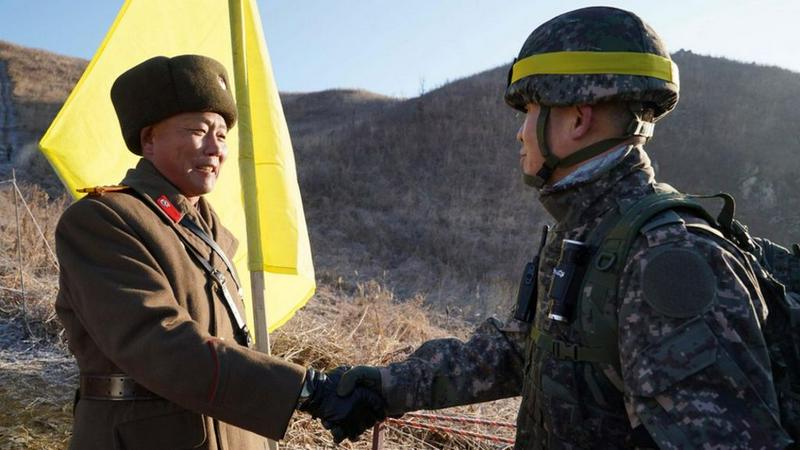North And South Korea Open Their Borders For 1985 Family Reunion Program
By | September 18, 2020

Relations between North and South Korea have been fraught since the end of World War II, when the countries were separated by the Demilitarized Zone. Although there's only 2.5 miles of DMZ between the two countries, their ideologies may as well be from different planets. North Korea is run as a dictatorship with a chairman at the top, while South Korea is a democratic republic with a president, much like the United States. Despite their vast differences, however, many of the people of North and South Korea are from the same families who almost never get to see one another. That changed briefly in 1985, when the countries opened their borders for a select group of people from both countries as a combination cultural exchange and family reunion.
The North-South Korea Split
Much like Germany, Korea was carved in half at the 38th parallel after the Soviet Union and the United States, respectively, occupied their countries, with the Soviets to the North and the U.S. in the South. In August 1945, as the border was defined, many Koreans fled south to avoid Soviet rule. It wasn't supposed to last as long as it has, but the differences between the two sides were exacerbated by the Cold War.
In 1948, the United States and the United Nations called for a vote among all Koreans in both countries to figure out what to do with the peninsula. The North refused to vote and installed former communist Kim Il Sung as the first premier of the Democratic People's Republic of Korea, while South Korea formed their own government with anti-communist Syngman Rhee at the helm.
Following the Korean War, which lasted from 1950 until 1953, the two countries were more at odds than ever, and from then on, there's been very little communication between them. Like East and West Berlin, Korean citizens had to stay in their respective countries, wherever they'd landed, following the settling of the DMZ. It looked as if family members on either side of the dispute would never see or even speak to each other again. In 1985, the Red Cross estimated that at least 10 million family members in North and South Korea had been separated.

North-South Korean Relations Over The Years
North and South Korea resumed political discourse in 1972, and for a brief moment, it looked as if reunification was on the table. Both countries agreed to stop slandering one another and conceded that military conflict was bad for both of them, but after a few meetings, North Korea pulled out of the whole thing because South Korea refused to repeal their anti-communist laws. (North Korea abruptly ending negotiations on a whim has been a regular occurrence throughout their attempts at conversation and reunification.) Miraculously, however, in 1985, they put aside their differences long enough to allow 50 people from each country, as well as various performers, to briefly cross the border for a North-South Korean family reunion.

The North-South Korean Family Reunion
It's not entirely clear how North and South Korea chose the family members who crossed over the DMZ in 1985, but among them were professors, entertainers, and a few people from the clergy. They met in a large hotel room in Seoul, where they exchanged pleasantries and learned of births and deaths over the previous decades. Tragically, the family reunion was cut short after the North Korean government accused the visitors from South Korea of dispensing anti-communist propaganda while meeting with their relatives.

The Future Of North And South Korea
That was the last time the countries did anything together. Even in 1988, when South Korea hosted the Summer Olympics, North Korea didn't take part, didn't broadcast the event, and to make things ever weirder, tried to stage their own Olympics the very next year.
The brief family reunion may have been nice, but both countries remain gun-shy about one another to this day. Fortunately, more reunions have been organized, starting in 2000. Since then, about 20,000 people have taken part in organized reunions, although once a family member is selected to take part in the meeting, they can never do so again.

